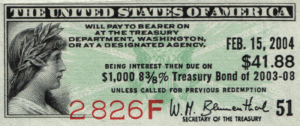“An end of year compilation of conversations with various NASA scientists, engineers, and researchers throughout 2017 on the NASA in Silicon Valley Podcast.”
2017 End of Year Podcast | NASA
Posted in space
Posted in space
“An end of year compilation of conversations with various NASA scientists, engineers, and researchers throughout 2017 on the NASA in Silicon Valley Podcast.”
“These are the oldest and most enduring words in history, researchers at the University of Reading has found … ”
“A review of the most important developments in rate design, distributed energy deployments, and utility business models.”
The robots, with man-made “hands and eyes”, could assemble different types of deadly explosives including artillery shells, bombs and rockets, he said. They could also make more sophisticated ammunition such as guided bombs, equipped with computer chips and sensors, that could carry out precision strikes.
Robots could treble China’s bomb and shell production capacity in less than a decade according to a senior scientist involved in a programme that is using artificial intelligence to boost the productivity of ammunition factories.
Xu Zhigang, a researcher with the Chinese Academy of Sciences’ Shenyang Institute of Automation and a lead scientist with China’s “high-level weapon system intelligent manufacturing programme”, told the South China Morning Post last Wednesday that about a quarter of the country’s ammunition factories had replaced many workers with “smart machines” or begun to do so.
Home-grown aircraft carrier tops list of major additions to China’s navy in 2017.
Let’s say that you no longer trust your currency exchange to host your Bitcoin wallet and you don’t trust a Trezor or Nano hardware wallet. You don’t trust your memory and you don’t trust your kids. And you certainly know better than to keep your wealth in your PC or phone. That would be downright crazy—right? What can you do?!
A growing number of people are printing paper wallets. It is the ultimate form of security. Some individuals even delete their cloud wallet, leaving everything to a string of hex characters or a QR code printed onto a slip of paper. (NB. You had better be certain that you and a few trusted individuals know how to find that piece of paper!)
But here’s an interesting mystery. If you print the paper wallet off-line and delete your other wallets, then how can the blockchain ‘know’ that you have changed wallets? The short answer: It doesn’t and you haven’t!
But, in both cases, the fact that you made a photocopy of your deed or corporate bond is not of any consequence to others. It is the same with a Bitcoin wallet. (In this case, the ownership record is netiher in a government warehouse nor in your posession. It is crowd-sourced).
 Printing out a paper wallet does not change your wallet ID. The paper wallet is simply another method of storing and retrieving the proof that you own a part of a mathematical solution set—That is, you know the solution to a problem.
Printing out a paper wallet does not change your wallet ID. The paper wallet is simply another method of storing and retrieving the proof that you own a part of a mathematical solution set—That is, you know the solution to a problem.
Your paper wallet is just a copy the keys to your wealth. Of course, you may choose to destroy the other keys, that’s your business. No one knows or verifies that you still have access to your stored knowledge or how you stored it. It’s up to you to maintain access to the “document”. The blockchain only records a transfer of ownership from one wallet to another at the time of a payment transaction.
Got it? I hope you like the metaphors. I am fairly proud of myself for this explanation.
Philip Raymond co-chairs CRYPSA, publishes A Wild Duck and hosts the New York Bitcoin Event. Last month, he kicked off the Cryptocurrency Expo in Dubai. Click Here to inquire about a live presentation or consulting engagement.
Posted in robotics/AI, transportation
Posted in government, internet